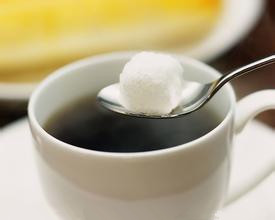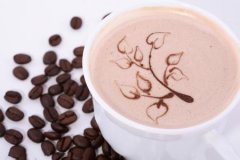"Coffee Coffee" picked by Coffee in terms of altitude

As the birthplace of tea culture in China, the concept of "good tea comes from high mountains" is deeply rooted in the hearts of the people, so if it is mentioned that "high mountains make good coffee", there should be many people who agree with it. In fact, many low-altitude areas can also produce top-quality coffee. Under the premise of complete air temperature, rainfall, topography and soil, coffee trees especially like the microclimate characteristics of frequent fog and large temperature difference between day and night. If an area has these two microclimate characteristics although the altitude is not high enough, it may also become a producing area of high-quality coffee. It is precisely because of these in high altitude areas (high mountain areas) that the conclusion of "good coffee comes from high mountains" is verified.
There are many reasons for high altitude: first, it is generally foggy in high mountain areas, and sunlight is affected by fog beads, which enhances part of the visible light, thus enhancing the effect of photosynthesis; second, the forest in high mountain areas is lush, which plays a shading role. Coffee trees receive light for a short time and decrease in intensity and diffuse light, which is conducive to the accumulation of nutrients in coffee fruit. Third, the annual average temperature in alpine areas is low, the ripening period of coffee fruit is long, and the accumulation of nutrients is relatively sufficient. Just like one rice a year in Northeast China, it is naturally much better than three-or even four-season rice on Hainan Island. The fourth reason is that the annual average temperature in alpine areas is low, and coffee beans are hard and expansive. The hard texture makes brown beans more suitable for storage, more conducive to quality preservation, and easier to bake with good expansibility. Reason 5, in alpine areas, there is a large temperature difference between day and night, so that coffee trees have sufficient dormancy time and can transform and store nutrients-early to go to bed and get up early is good for the body! Reason 6, the content of amino acids and other aromatics in coffee will increase with the increase of altitude and the decrease of average temperature. Therefore, coffee beans produced in high mountain areas are usually rich in aroma and mellow in taste. ("Coffee Coffee" from this article)
Important Notice :
前街咖啡 FrontStreet Coffee has moved to new addredd:
FrontStreet Coffee Address: 315,Donghua East Road,GuangZhou
Tel:020 38364473
- Prev

When was the first coffee wave?
The first coffee wave: In the 1930s and 1940s, the U.S. military brought coffee to all parts of the world as a necessity to prevent fatigue during combat, and the bitter taste of coffee served as a refreshing effect. Then came the invention and rise of instant coffee. Second coffee wave: After World War II, Italy's method of steam pressure extraction of espresso began to be familiar and accepted.
- Next

Analysis of the five most common coffee sugars
The same cup of black coffee, with different sugar will have a very different flavor. Among them, soft white sugar, cube sugar, white granulated sugar, rock sugar and yellow sugar are the most common types. Soft white sugar: no impurities, pure taste, low sweetness, easy to dissolve. Sugar cube: made from soft white sugar, dissolution efficiency is slightly lower than soft white sugar, but strong texture, suitable for blending flavor. White sugar: not easy to dissolve, warm
Related
- Detailed explanation of Jadeite planting Land in Panamanian Jadeite Manor introduction to the grading system of Jadeite competitive bidding, Red bid, Green bid and Rose Summer
- Story of Coffee planting in Brenka region of Costa Rica Stonehenge Manor anaerobic heavy honey treatment of flavor mouth
- What's on the barrel of Blue Mountain Coffee beans?
- Can American coffee also pull flowers? How to use hot American style to pull out a good-looking pattern?
- Can you make a cold extract with coffee beans? What is the right proportion for cold-extracted coffee formula?
- Indonesian PWN Gold Mandrine Coffee Origin Features Flavor How to Chong? Mandolin coffee is American.
- A brief introduction to the flavor characteristics of Brazilian yellow bourbon coffee beans
- What is the effect of different water quality on the flavor of cold-extracted coffee? What kind of water is best for brewing coffee?
- Why do you think of Rose Summer whenever you mention Panamanian coffee?
- Introduction to the characteristics of authentic blue mountain coffee bean producing areas? What is the CIB Coffee Authority in Jamaica?

